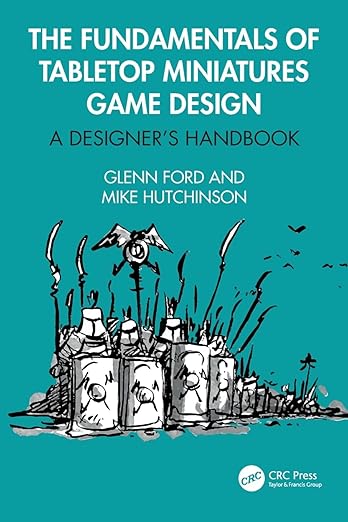As an ancient historian, curriculum designer, and wargamer, I’ve always been captivated by the intersection of history and strategy in games. Games have a unique way of bringing the past to life, providing a platform to explore historical events, test strategies, and engage with complex systems in a hands-on way. Recently, I took this passion a step further by diving into The Fundamentals of Tabletop Miniatures Game Design: A Designer’s Handbook.
This book is a treasure trove for anyone interested in creating immersive, balanced, and engaging miniature games. It delves into the mechanics and principles that make these games not just enjoyable but also meaningful. From designing scenarios and crafting rules to ensuring balance and replayability, the handbook offers insights into the meticulous process of game creation. For me, it’s not just about the technicalities but about how these mechanics can be a vehicle for both entertainment and education.
One of the aspects I find most inspiring is how tabletop miniatures games can be used as educational tools. These games can transform abstract concepts into tangible experiences. For example, they allow players to grapple with historical dilemmas, explore cause-and-effect relationships, and immerse themselves in the complexities of decision-making—all while having fun. For students, these experiences can make historical content more accessible and engaging. Imagine a classroom where students command fleets in a simulation of the Battle of Actium or navigate the challenges of maintaining supply lines in a Napoleonic campaign. These scenarios make history come alive, fostering deeper understanding and critical thinking.
But the potential of tabletop games goes beyond teaching subject content. They are also powerful tools for building skills. Whether it’s teamwork, strategic thinking, adaptability, or problem-solving, the act of playing and designing games cultivates a range of transferable skills. As someone passionate about curriculum design and work-integrated learning, I see tremendous opportunities to incorporate these elements into educational settings. For instance, students could collaborate to design their own historical scenarios, learning not just about the past but also about project management, communication, and creative problem-solving.
This journey into game design also aligns with my broader interest in the pedagogical power of games. Over the years, I’ve explored various ways to use games in teaching, from escape rooms that foster teamwork to wargames that simulate historical events. Each project has reinforced my belief in the value of play as a medium for learning and engagement.
Reading The Fundamentals of Tabletop Miniatures Game Design has been both a professional and personal inspiration. It’s prompted me to think more deeply about the ways games can bridge the gap between entertainment and education. As I continue this exploration, I’m eager to apply these principles to new projects, whether designing a historical wargame, enhancing a curriculum, or creating immersive learning experiences.
I’d love to hear from others who are exploring the world of game design or using games in educational contexts. What have been your experiences with integrating games into your work or learning? Let’s connect and share ideas—after all, collaboration is at the heart of both good game design and impactful education.
#GameDesign #TabletopGaming #HistoricalWargaming #GameBasedLearning #CurriculumDesign

Leave a Reply